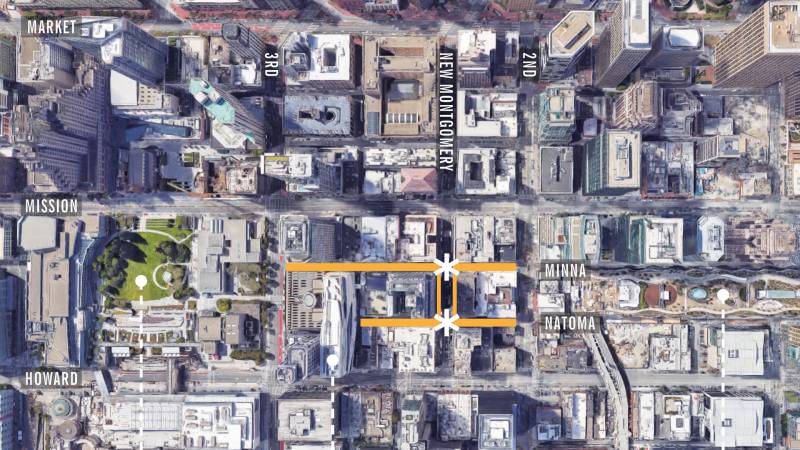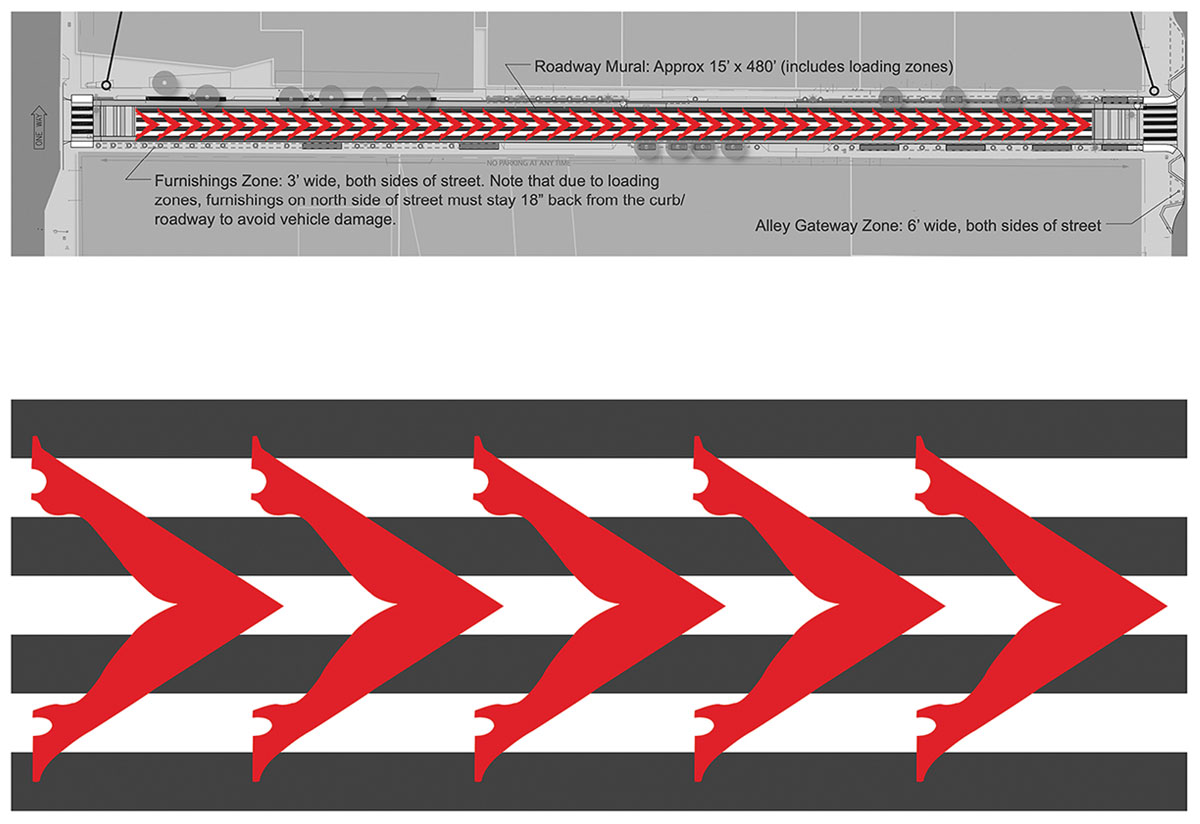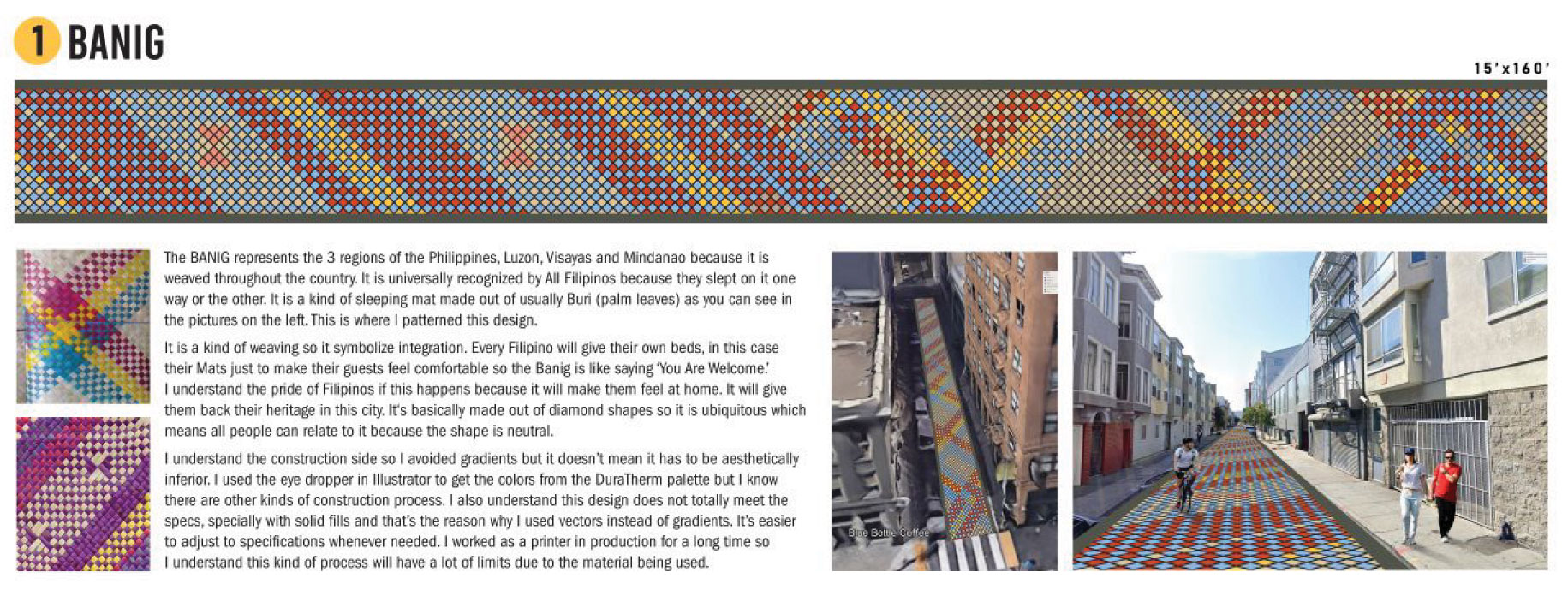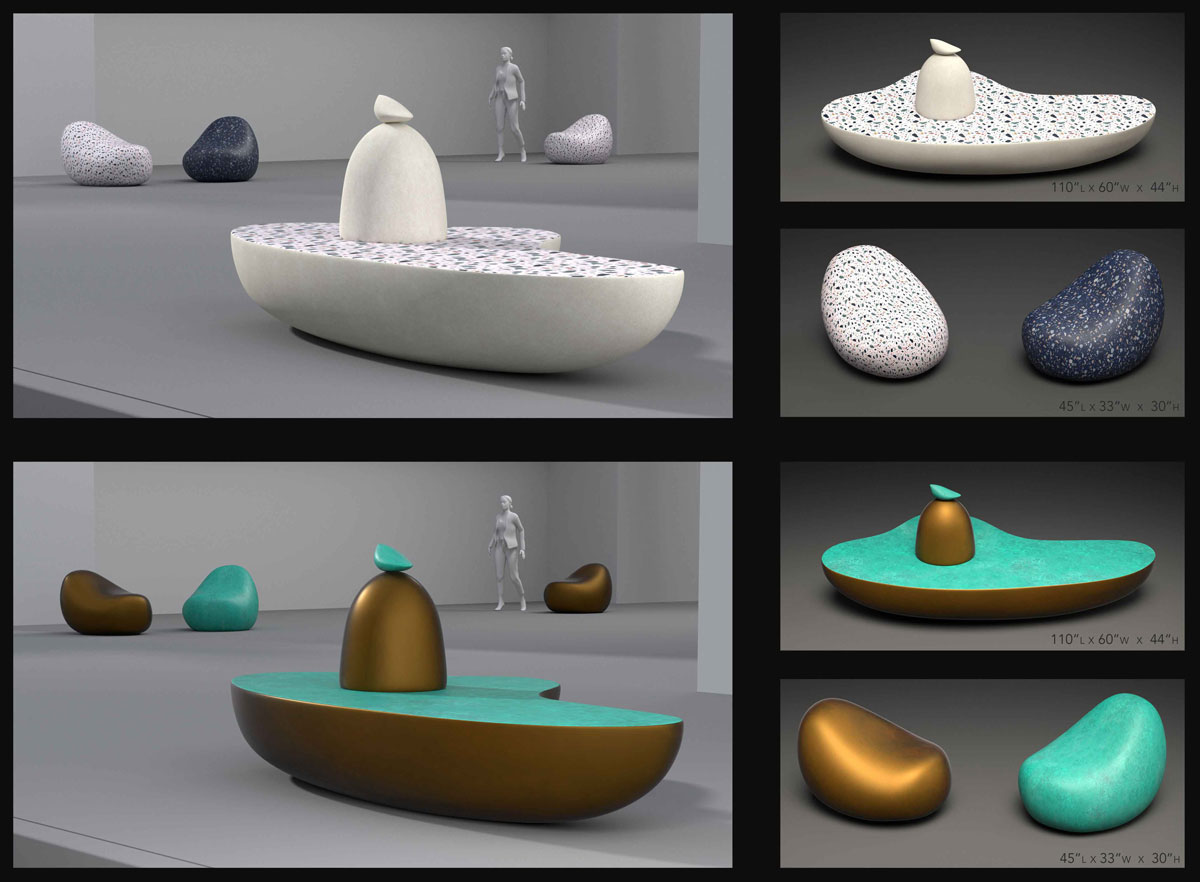It’s not often that major overhauls to San Francisco’s downtown streets also involve the careful selection of artist-designed bike racks. Or colorful asphalt art inlaid into newly paved thoroughfares. But a new streetscape project, a collaboration between city departments, the San Francisco Museum of Modern Art and the Yerba Buena Community Benefit District plans to turn about 800 feet of Minna and Natoma Streets into an arts corridor, with help from designs by five local artists.
Estimated to be finished by the fall of 2023, the Minna Natoma Art Corridor hopes to transform the narrow streets into a “unique pedestrian destination,” as well as an appealing alternative to busier east-west routes like Mission and Howard.

The five artists selected by a San Francisco Arts Commission (SFAC)-organized committee will design large-scale street murals (to be made with colored thermoplastic) and street furniture (benches, chairs, bollards and bike racks). Oakland painter Muzae Sesay’s proposal for the two stretches of Natoma Street resembles a stack of cozy homes with arched front doors. Sculptor and woodworker Jesse Schlesinger is in charge of Natoma’s street furniture; his designs use natural elements like salvaged old-growth redwood to connect the green space atop the Transbay Transit Center with Yerba Buena Gardens.







